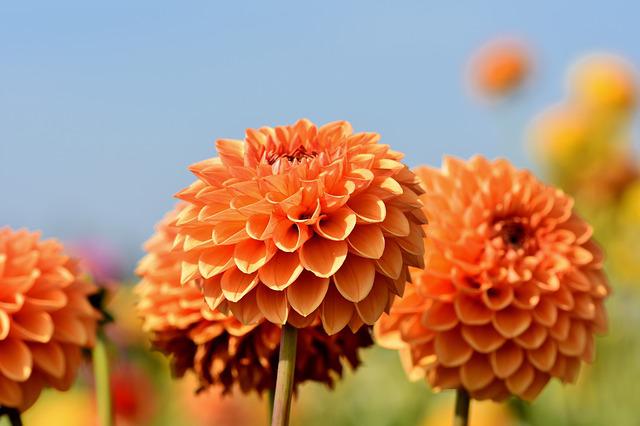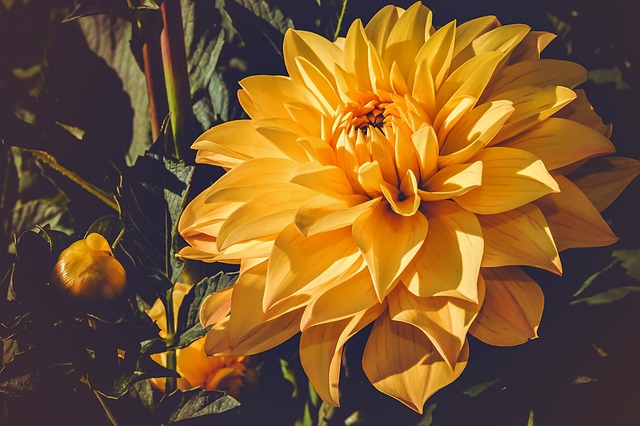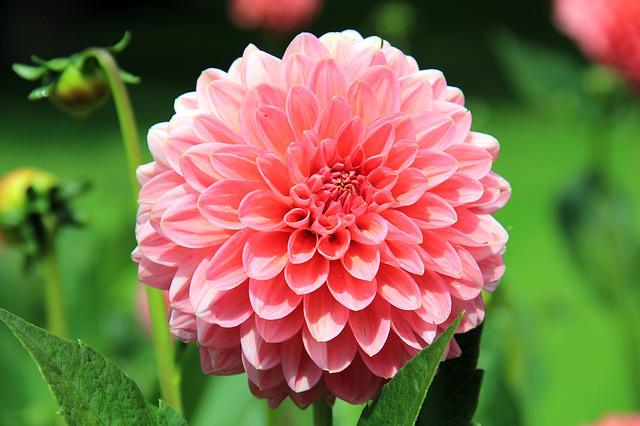When Does Dahlia Bloom?

In most of the world, dahlias which are warm-season flowers, bloom from midsummer to autumn. The environment and the variety influence the timing and duration of a dahlia blooming. Once the tubers are planted in the soil, it will take about ten to sixteen weeks for the flowers to bloom. Since the dahlia season typically begins in July in many regions. Due to their sensitivity to cold, dahlia tubers are not planted until the soil temperature reaches around 60°F (16°C) in the spring.
Dahlias are long-blooming plants that require plenty of sun and regular water to perform well. They can also be prone to mildew and fungus, so make sure you take measures to prevent these problems from developing by foliar spraying regularly with aerate, using white vinegar on plant foliage as needed, and watering thoroughly without saturating the ground.
Blooming dahlias will slow in the winter regardless of whether or not you experience frost because of shorter days.
Table of Contents
Dahlia Blooming Time: How Long Does It Take?
It generally takes about 90 days for dahlia to begin blooming, but this can vary depending on the species, the amount of light, the fluctuation in temperatures, and the amount of precipitation.
Dahlias planted in April will begin blooming roughly 90 days later, in the middle of July. While some, like ‘Penhill Watermelon,’ take longer to bloom than others, others, like ‘Burlesca,’ which are more like pompons or balls, bloom much sooner.
For the vast majority of gardeners, dahlias begin to bloom in July, and by August, they should all be in full bloom. Most growers experience peak flowering in September, then production tapers off in October as shorter days reduce available sunlight.
Can You Encourage Dahlias to Flower Earlier and Produce More Blooms?
Know that dahlias are perennial flowers that will bloom yearly if given the right care. Our dahlias would keep growing if it weren’t for the death frosts. Therefore, dahlias can theoretically bloom forever given the right conditions of heat, light, water, and nutrients.
You can get your dahlias to bloom sooner if we can create those conditions sooner. Because a hard freeze is the only thing that prevents them from blooming, this in no way hinders their ability to bloom later in the season. And wouldn’t it be great if the dahlia season lasted for a month or two longer?
Additionally, as we have seen, dahlias are among the most spectacular and fruitful plants you can cultivate. They provide a staggering quantity and variety of flowers, which is why they are so well-liked by flower farmers, gardeners, and dahlia fans. Who wouldn’t want the dahlia season to begin a few weeks earlier?

When Does the Dahlia Season End?
Up until the first frost, dahlias will continue to bloom. As a result, the dahlia season’s length depends on the local climate. But in many places, the dahlia season can last up to five months.
A variety of methods exist for extending the blooming time of dahlias. Some of these will cause dahlias to bloom earlier in the year, while others will prolong their blooming season in the fall.
Planting dahlia tubers in a warm indoor area is an excellent way to jumpstart the growing season. While it’s still cool outside, the plants will benefit from this early start. To get the tubers to bloom earlier in the year, they should be allowed to sprout and grow a little bit inside.
Use covers to keep the frost and rain off your dahlias in the fall if you want to enjoy them longer. Seasons can be prolonged with the help of frost cloth, low tunnels, and high tunnels.
Storing Dahlia Tubers After the Season Is Over
In zones 8 and above, dahlias can sometimes overwinter in the garden, but they are susceptible to wet feet and quickly rot if they get any. Dahlia tubers benefit from a cool-season hibernation in the fall after being dug up and stored.
It’s inevitable that, like me, you’ll wake up one morning in late autumn to find your dahlia plants completely blackened and lifeless after having been subjected to a hard frost. Never forget that dahlias are tropical plants; any frost will kill them instantly.
The following steps are simple once this occurs:
- Plants should be dug up.
- Their stems are cut off a few inches above the tuber.
- Dirt washed off.
- The tubers dried in the autumn sun.
Many of your tubers will have grown to be twice or even three times their original size since you planted them, which is excellent news because it means you’ll have even more to plant in the spring.
Just toss them in a big paper bag with some sawdust or peat moss once they’re dry (no plastic – this will encourage rot). Then put them away until next spring in a cellar or garage that won’t freeze over. Then, you can decide whether to plant the large clumps as is or divide them, making sure to preserve at least three eyes per division.

